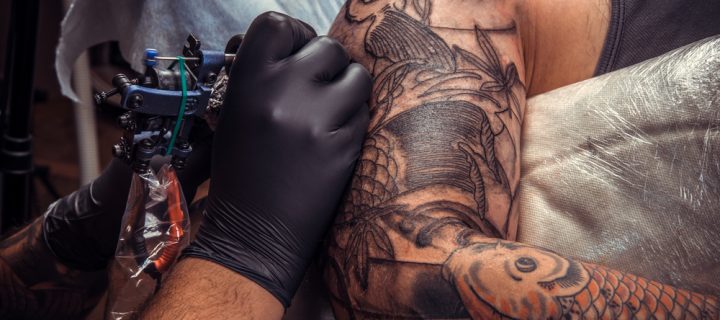Looking around this summer, it’s clear to see that more and more people are getting tattoos. On old and young, their presence is definitely growing. But while getting a tattoo is becoming more commonplace, how safe is it really?
The FDA says that some pigments used in tattoos are the same as those found in printers and car paints. Die hard fans will say, if done properly, there is hardly any risk at all in getting some ink done.
But some evidence points out that, while possibly harmless, not everything is known about what happens in the body when you get a tattoo.
The regular risks are clear. It’s wise to always make sure that your tattoo artist really, truly does know what they are doing before going under the needle. Infections, allergies to ink, scarring, bumps known as granulomas and swelling or burning during an MRI can all happen as a result of getting a tattoo.
But not so readily known is the effect of simply having tattoo ink present under your skin.
Consequently, according to the U.S Food and Drug Administration’s website, a team of researchers in the FDA’s Arkansas-based National Center for Toxicological Research (NCTR) is currently looking at multiple variables surrounding tattoos, including how tattoo ink metabolizes in the body, the short and long term effects of the pigments in tattoo ink and how light interacts with tattoo ink.
“There have been no systematic studies of the safety of tattoo inks,” research chemist Paul Howard, Ph.D is quoted as saying, “so we are trying to ask—and answer—some fundamental questions.”
For example, the FDA states, some tattoos fade over time or when they are exposed to sunlight.
“We want to know what happens to the ink,” says Howard. “Where does the pigment go?”
Some evidence indicates that some pigments migrate to the lymph nodes in the body. The lymph nodes work to filter out disease in the body, and it’s not yet known if this migration is harmful or not.
But not much else is known.
The bottom line? Apparently, at present, getting a tattoo is still basically a “do-so-at-your-own-risk” procedure. The FDA doesn’t officially approve the use of any tattoo pigment for injection into a person’s skin. Not event the use of henna in temporary tattoos.
But maybe they are just playing it safe.
Are tattoos an ancient tradition that should be considered a worry-free procedure, or is the FDA onto something?
Your call.
Photo credit: Deviatov Aleksei/Shutterstock












